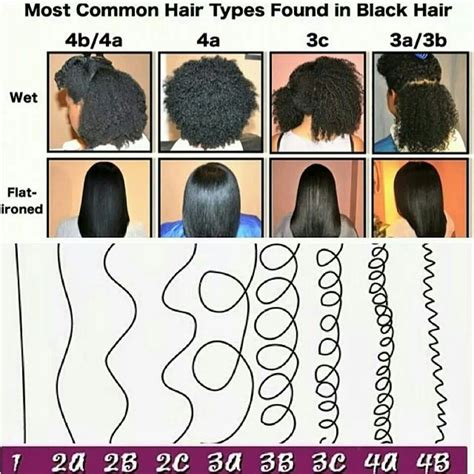Introduction

Curly hair is a beautiful and versatile hair type that can be styled in a variety of ways. Embracing the natural texture of curly hair can be a journey of self-discovery and empowerment. This article delves into the diverse range of curly hairstyle types for black people, providing insights into their characteristics and styling techniques.
Types of Curly Hair
According to the Andre Walker Hair Typing System, curly hair types for black people are classified into four main categories:
- Type 3A: Loose curls with large, defined ringlets.
- Type 3B: Medium curls with smaller, tighter ringlets.
- Type 3C: Tight, corkscrew-like curls with a fine texture.
- Type 4A: Coily hair with a zig-zag pattern and tightly packed coils.
- Type 4B: Coily hair with a kinky, textured appearance.
- Type 4C: Coily hair with a tightly coiled, wiry texture.
Table 1: Andre Walker Hair Typing System for Curly Hair
| Hair Type | Description |
|---|---|
| 3A | Loose, defined ringlets |
| 3B | Tighter, smaller ringlets |
| 3C | Fine-textured, corkscrew-like curls |
| 4A | Zig-zag pattern with tightly packed coils |
| 4B | Kinky, textured appearance |
| 4C | Tightly coiled, wiry texture |
Styling Techniques
Curly hair requires specialized styling techniques to maintain its health and beauty. Some of the key methods include:
- Moisturizing: Curly hair tends to be dry, so regular moisturizing is essential. Use products that are formulated for curly hair and apply them liberally to the hair and scalp.
- Detangling: Detangling curly hair can be challenging. Use a wide-toothed comb or brush and apply a detangling spray or conditioner to reduce breakage.
- Deep conditioning: Deep conditioning treatments provide intensive hydration to curly hair. Use a deep conditioner that is specifically designed for curly hair and leave it in for at least 30 minutes.
- Protective styling: Protective styling techniques, such as braids, twists, or buns, help to protect curly hair from damage and retain moisture.
Table 2: Styling Techniques for Curly Hair
| Technique | Purpose |
|---|---|
| Moisturizing | Maintains hydration |
| Detangling | Prevents breakage |
| Deep conditioning | Provides intensive hydration |
| Protective styling | Protects from damage and retains moisture |
Tips and Tricks
- Use sulfate-free shampoos and conditioners to avoid stripping hair of natural oils.
- Avoid over-washing; wash your hair 2-3 times per week.
- Use a microfiber towel to dry your hair gently.
- Avoid using heat styling tools without using a heat protectant spray.
- Get regular trims to remove split ends and promote healthy hair growth.
Frequently Asked Questions
Q: How often should I cut my curly hair?
A: Get regular trims every 8-12 weeks to remove split ends and promote healthy hair growth.
Q: What is the best way to detangle curly hair?
A: Use a wide-toothed comb or brush and apply a detangling spray or conditioner to reduce breakage.
Q: Can I use coconut oil on my curly hair?
A: Yes, coconut oil can be used as a natural moisturizer for curly hair. Apply it to the hair and scalp and leave it in for at least 30 minutes before washing it out.
Q: How do I prevent shrinkage in my curly hair?
A: Use products that are formulated for curly hair and avoid over-washing to prevent shrinkage.
Conclusion
Curly hair is a beautiful and versatile hair type that can be styled in a variety of ways. By understanding the different types of curly hair and using the appropriate styling techniques, individuals can embrace the natural beauty of their curls. With the right care and maintenance, curly hair can be a source of pride and confidence.
